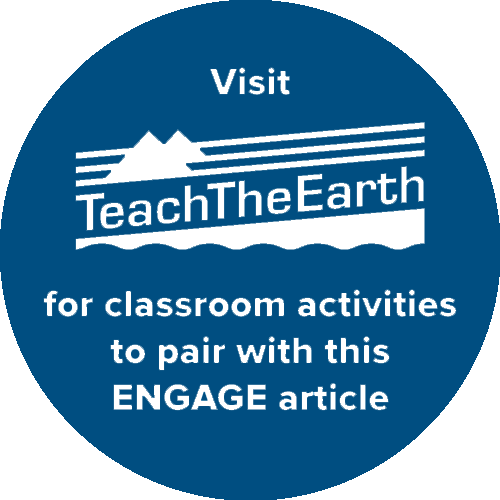Like moths to a lamp, billions of birds flock to brightly lighted urban areas—far from the natural resources they need on their journeys—as they migrate across North America during spring and fall. Light pollution is attracting migratory birds.
“It almost acts as a beacon to them, and they gravitate toward it,” said Amy Collins, a postdoctoral research fellow in fish, wildlife, and conservation biology at Colorado State University.
As these avian species fly over urban sprawl, they waste precious energy navigating urban environments and are most affected during dusk and dawn, when most migratory birds usually take flight.
Although experts already knew that noise and light pollution can affect bird species, the extent of the intrusion isn’t well defined. To provide more answers, Collins and colleagues created a new atlas of stopover locations and migratory hot spots that was presented on 14 December at AGU’s Fall Meeting 2021. The new work shows the extent to which cities affect the travel plans of birds—and the factors driving these stopover decisions.
“Urban life can be disorienting for migrating birds…and a lot of wildlife is struggling to adapt to that setting,” said Danielle Ferraro, a natural resources specialist for the Center for the Environmental Management of Military Lands at Colorado State University who was not involved in the study. The new project provides important information to help the preservation of natural areas key to the birds’ safe passage.
Mapping Birds on the Wing
Many natural habitats attract and support migratory birds, including forest cover, corridors along rivers and streams, marshes, ponds, and stretches of vegetation lining bodies of water. Birds gravitate toward forests or forested habitats to rest in protected areas, while riparian corridors provide water and food.
In contrast, light pollution and tall buildings artificially attract migrating flocks, challenging them with high levels of interaction with humans, structures, and roadways.
To shed light on the problem, Collins and her colleagues at Colorado State University combined weather radar data from 2016 to 2020 across 143 locations with environmental models to catch birds on the wing after sunset across the contiguous 48 states. Weather radars, along with data from NASA satellites like Landsat, register the massive densities of thousands of birds taking off during dusk and help predict regional hot spots during the spring and fall migration seasons.
“The technology and advances that we’ve seen with satellite and radar information in the last 20 years have been such that we can now do these kinds of studies.”
The scope of this project, however, only recently became feasible. “The technology and advances that we’ve seen with satellite and radar information in the last 20 years have been such that we can now do these kinds of studies,” said Collins. “I would say even 5 years ago we probably wouldn’t have been able to do this.”
Historically, ornithologists would complete laborious in-person bird surveys in particular migratory locations—a constant logistical challenge for access and staffing. Now, the radar and satellite data offer another way to identify migration hot spots to study and protect. “It’s a nice complement for all those other forms of data that we’ve been collecting for years and years,” Collins said.
The new data helped show Collins and colleagues the birds’ hot spot stopovers. “We’re seeing spring hot spots in California, Texas, a bit of the Midwest,” she said, “and then in fall, real hot spots in the Midwest.” With “aeroecology” becoming more critical as the threats to migratory birds increase, Collins noted, a combination of radar, satellite, and field research seems like a natural next step.
—Brian Phan (@PhantasticTides), Science Writer
This news article is included in our ENGAGE resource for educators seeking science news for their classroom lessons. Browse all ENGAGE articles, and share with your fellow educators how you integrated the article into an activity in the comments section below.



